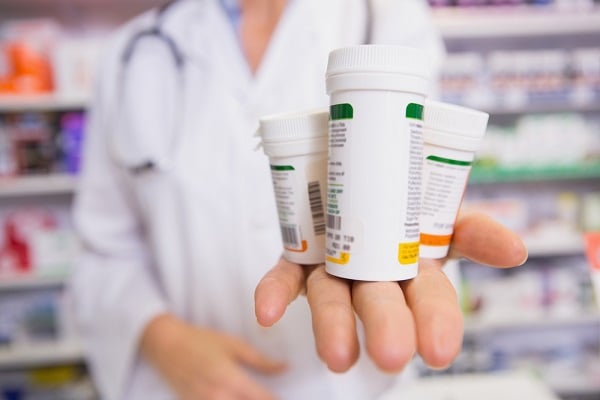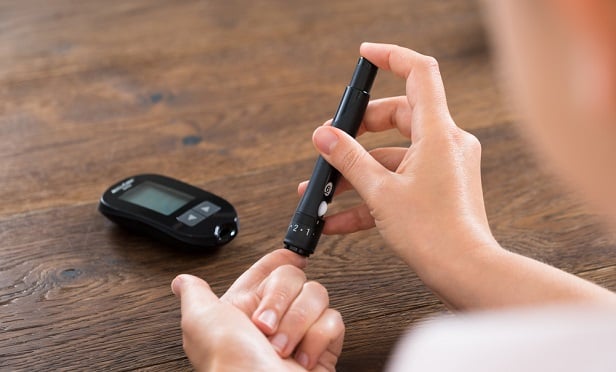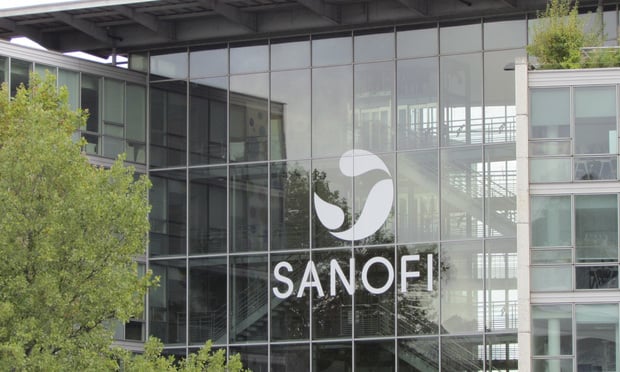 One expert estimates that the pharmaceutical industry gets agreater financial return from its patent strategy than that of anyother industry. (Photo: Shutterstock)
One expert estimates that the pharmaceutical industry gets agreater financial return from its patent strategy than that of anyother industry. (Photo: Shutterstock)
David Herzberg was alarmed when he heard that Richard Sackler,former chairman of opioid giant Purdue Pharma, was listed as an inventor on anew patent for an opioid addiction treatment.
|Patent No. 9861628 is for a fast-dissolving wafer containing buprenorphine, a generic drug that has beenaround since the1970s. Herzberg, a historian who focuses on the opioid epidemicand the history of prescription drugs, said he fears the patentcould keep prices high and make it more difficult for poor addicts to get treatment.
|Related: Patent abuse and the high cost ofdrugs
|“It's hard not to have that reaction of, like … these vultures,”said Herzberg, an associate professor at the University ofBuffalo.
|James Doyle, vice president and general counsel of RhodesPharmaceuticals, the Purdue subsidiary that holds the patent, saidin an email statement that the company does not have a developed orapproved product and “therefore no money has been made from thistechnology.”
|“The invention behind the buprenorphine patent in question wasdeveloped more than a dozen years ago,” he wrote. “If a product isdeveloped under this patent, it will not be commercialized forprofit.”
|Yet, the patenting of a small change in how an existing drug ismade or taken by patients is part of a tried-and-truepharmaceutical industry strategy of enveloping products with aseries of protective patents.
|Drug companies typically have less than 10 years of exclusiverights once a drug hits the marketplace. They can extend theirmonopolies by layering in secondary patents, using tactics criticscall “evergreening” or “product-hopping.”
|Lisa Larrimore Ouellette, a patent law expert at StanfordUniversity, said the pharmaceutical industry gets a greaterfinancial return from its patent strategy than that of any otherindustry.
|AztraZeneca in 2001 famously fended off generic versions of itsblockbuster heartburn medicine Prilosec bypatenting a tweaked version of the drug and calling it Nexium. WhenAbbott Laboratories faced multiple generic lawsuits over its bigmoneymaker Tricor, adecades-old cholesterol drug, it lowered the dosage and changed itfrom a tablet to a capsule to win a new patent.
|And Forest Laboratories stopped selling its Alzheimer's diseasedrug Namenda in 2014 after reformulating and patenting Namenda XRto be taken once a day instead of twice.
|Another common strategy is to create what Food and DrugAdministration Commissioner Scott Gottlieb calls “patent thickets,”claiming multiple patents for a single drug to build protectionfrom competitors. AbbVie's rheumatoid arthritis drug Humira hasgained morethan 100 patents, for example.
|The U.S. Patent and Trademark Office awards patents when aninnovation meets the minimum threshold of being newand non-obvious.Secondary patents are routinely granted to established drugs whenan improvement is made, such as making it a once-a-day pill insteadof twice a day, said Kristina Acri, an economist and internationalintellectual property expert at the Fraser Institute and ColoradoCollege.
|“Is there a better way? Maybe, but that's not what we're doing,”Acri said.
|The controversial patent that Sackler and five co-inventorsobtained is widely known as a “continuation patent.” (The originalpatent application for the wafer wasfiled in August 2007.)
|Continuation patents do not necessarily extend the patent lifeof a drug, but they can have other uses. In 2016, Rhodes filed alawsuit against Indivior alleging patent infringement.
|Indivior, formerly part of Reckitt Benckiser, sells a filmversion of the popular addiction treatment drug Suboxone that isplaced under the tongue — an oral medicine similar to what Rhodeshas patented. Indivior's comes in a lime flavor.
|Indivior's film, which federal regulators approved in 2010,dominates the market with a 54 percent average market share,according to the company's most recent financial report. And thecompany has vigorouslyfought rivals, including filing lawsuits against firms such asTeva Pharmaceutical Industries, which sought approval tomanufacture generic versions. Indivior declined to comment.
|The Rhodes Pharmaceuticals version would be a wafer that meltsquickly in the mouth. The inventors list potential flavorsincluding mint, raspberry, licorice, orange and caramel, accordingto the patent.
|For opioid historian Herzberg, the patent battles betweencompanies like Rhodes and Indivior are “absolute madness.”
|Decisions on what is available on the market to treat addictsshould be based on what is the best way to treat the people whohave the problem, he said.
|Patent battles, Herzberg said, are “not how you want drug policygetting made.”
|Attempts to change the patent system have intensified over thepast decade as prices of prescription drugs continueto climb.
|In 2011, President Barack Obama signed the America Invents Act,which included the creation of the Patent Trial and Appeal Board.The PTAB is an alternative to using the cumbersome U.S. courtsystem to challenge weak patents. Generic drug manufacturers haveused the board's “inter partes review” process and overturned 43percent of the patents they challenged, according to recentresearch.
|Critics of the administrative process, including thepharmaceutical industry trade group PhRMA, said it creates“significant business uncertainty for biopharmaceutical companies.”Often companies have to defend their products twice — both in thecourts as well as before the PTAB, said Nicole Longo, PhRMA'sdirector of public affairs.
|Drug giant Allergan attempted toovercome the PTAB's review process by arguing that the patentcouldn't be challenged at the review board because they sold thepatent to the St. Regis Mohawk Tribe, which had sovereign immunity.A federal appeals court ruledthis summer that Allergan could not shield its patentsfrom the PTAB review this way.
|This year, several members of Congress proposed bills that wouldunwind or limit changes made by the America Invents Act, thoughnothing is likely to happen before the midterm elections. TheSTRONGER Patents Act, introduced in both the House and Senate,would weaken the PTAB board by aligning its claims standards withwhat has been established by court rulings.
|Kaiser Health News is anonprofit news service covering health issues. It is an editoriallyindependent program of the Kaiser Family Foundation, which is notaffiliated with Kaiser Permanente.
|Read more about the high cost ofdrugs:
Complete your profile to continue reading and get FREE access to BenefitsPRO, part of your ALM digital membership.
Your access to unlimited BenefitsPRO content isn’t changing.
Once you are an ALM digital member, you’ll receive:
- Critical BenefitsPRO information including cutting edge post-reform success strategies, access to educational webcasts and videos, resources from industry leaders, and informative Newsletters.
- Exclusive discounts on ALM, BenefitsPRO magazine and BenefitsPRO.com events
- Access to other award-winning ALM websites including ThinkAdvisor.com and Law.com
Already have an account? Sign In
© 2024 ALM Global, LLC, All Rights Reserved. Request academic re-use from www.copyright.com. All other uses, submit a request to [email protected]. For more information visit Asset & Logo Licensing.








